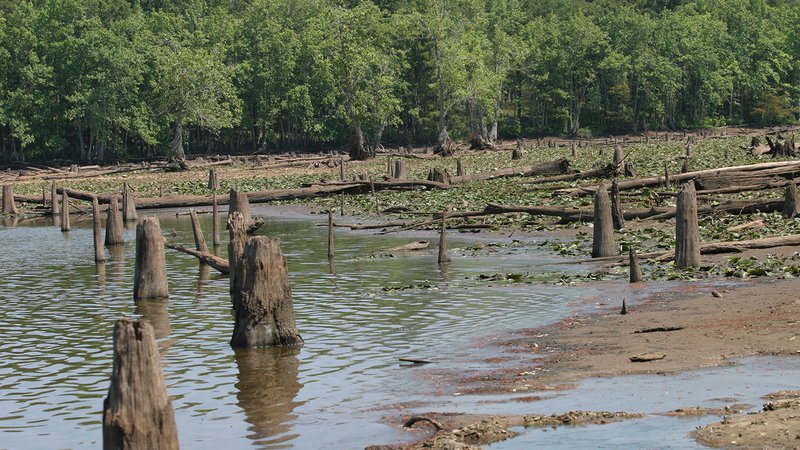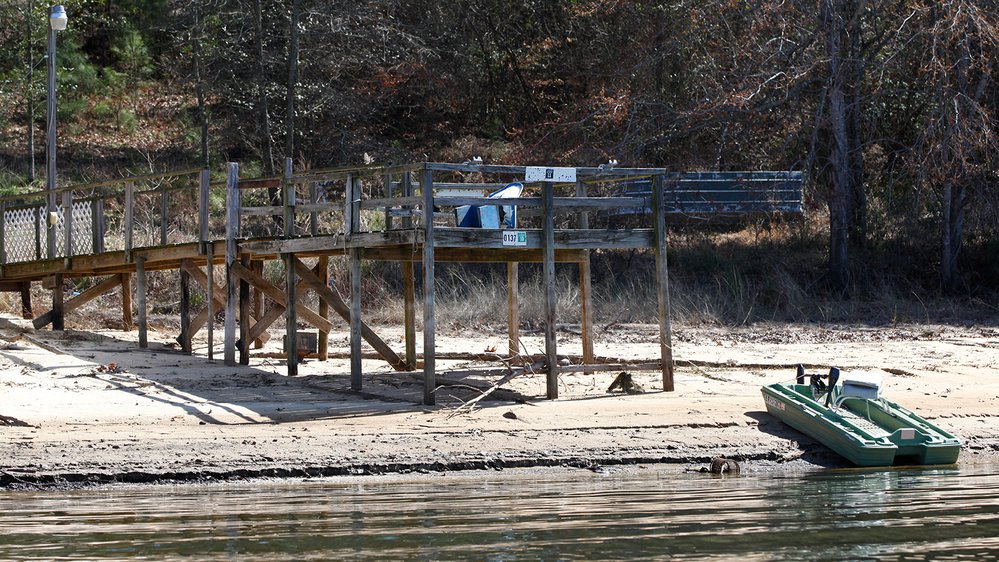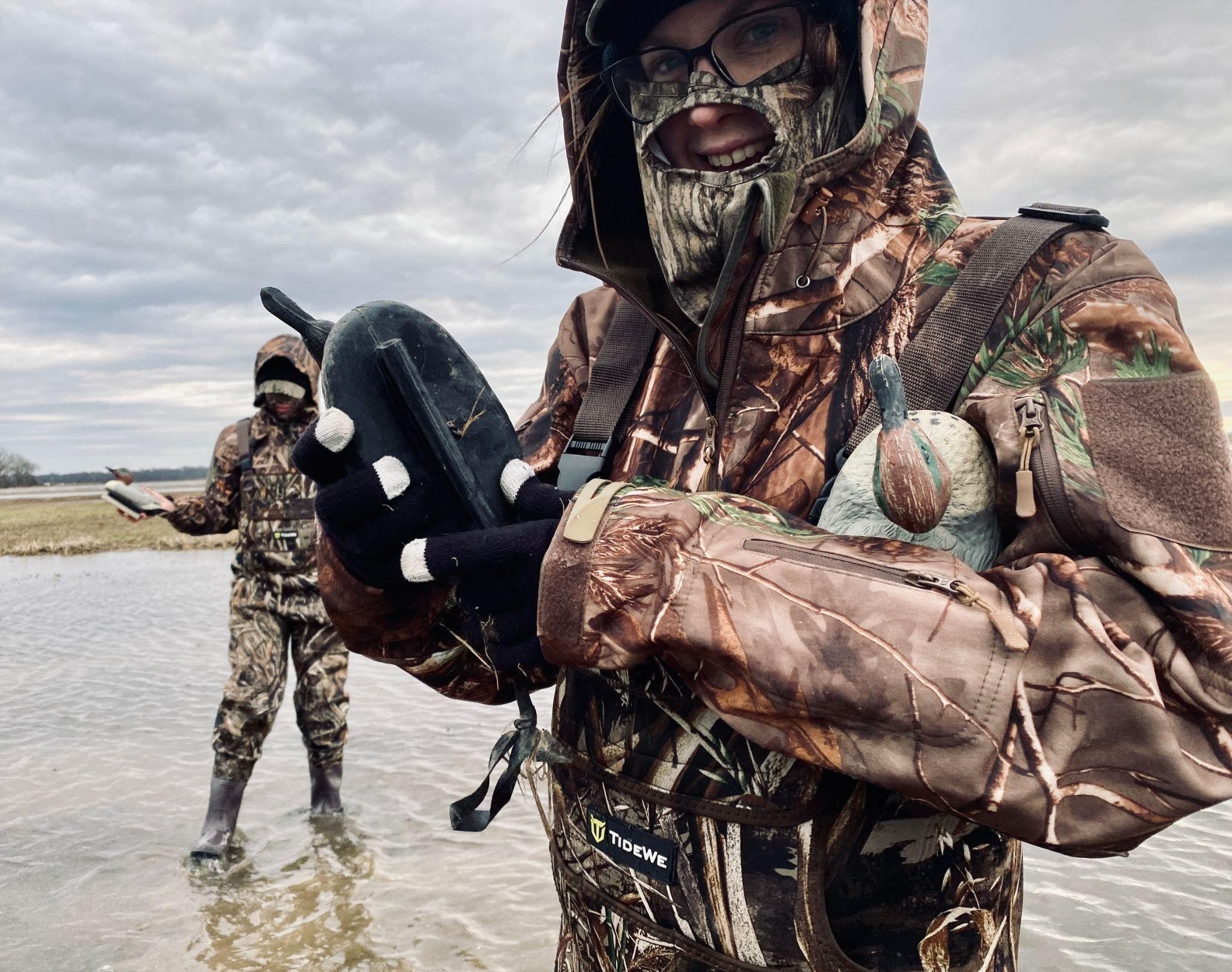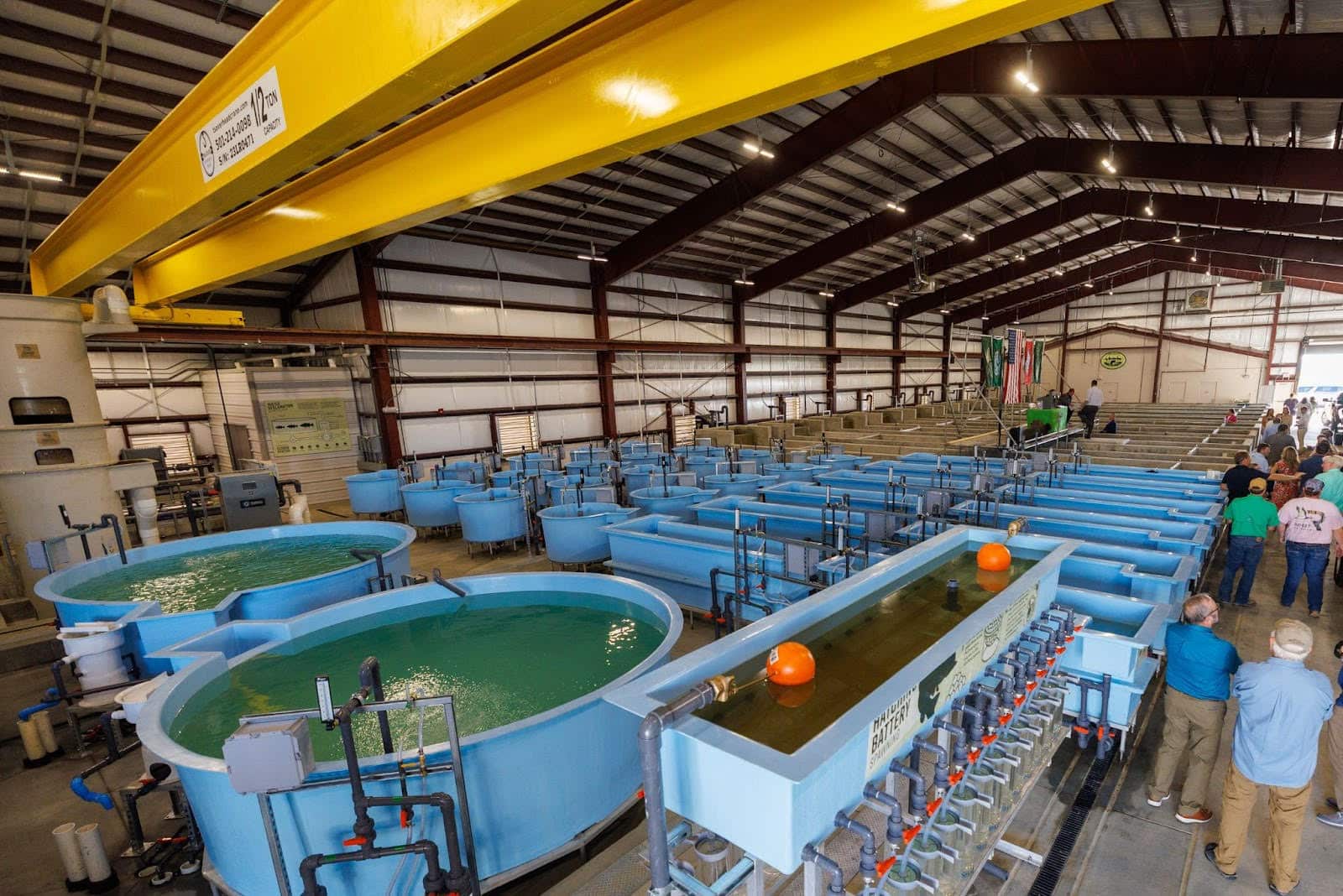Low water brings boating hazards near the surface
BY Jim Harris
ON 09-27-2023

Sept. 27, 2023
Jim Harris
Managing Editor Arkansas Wildlife Magazine
LITTLE ROCK — A hot, dry summer has left Arkansas lakes and rivers lower than usual for the arrival of fall, and the weather has brought water hazards closer to the surface. Recreational boaters and anglers need to be extra vigilant these days.
Jeremy Risley, the AGFC’s Black Bass Program coordinator, was working on Beaver Lake in northwest Arkansas earlier this week and said, “Out here, you can see some high spots (flats) now. Also, some buoys are marked and others are not. It’s imperative that boaters use extreme caution when out on the water.”
Beaver Lake on Monday was at 1,115.56 feet msl, or almost 6 feet below the current power pool. “Water levels are lower than the last three years, and obstructions are out there and in play,” regular Beaver Lake fishing guide Jon Conklin said.
Beaver is far from the only Army Corps of Engineers-managed lake to be significantly below normal level these days. With daily high summer temperatures in July and August, more dam generation was needed for electricity to keep those customers cool. But the lakes got little rainfall or tributary runoff to refill to what’s deemed the “normal conservation pool,” where lakes are held on average throughout the year at set elevation.
Bull Shoals Lake in north Arkansas was more than 4 feet low on Monday. Greers Ferry Lake is down even more noticeably, by more than 8 feet with stumps sticking up high off some islands. Lake Ouachita is almost 10 feet below normal pool level, bringing more stumps and wood structure into play for boaters.

Greers Ferry Lake’s drop has led to several boat launching access areas being partially closed to a portion of the ramp, Risley said. Boaters should plan ahead before reaching your favorite lake access point and finding it closed. In areas with limited access, practice consideration with other boaters trying to put their boats on the lake, too.
Lake Conway, meanwhile, is falling by intention, though anglers are still getting in their last casts at the bass, crappie, catfish and other fish before it is drained for the AGFC’s massive renovation project. By Monday, the lake was about 2 feet below normal pool as two Palarm Creek Dam gates are open to release water.
At the Corps of Engineers’ Millwood Lake in southwestern Arkansas, which is often treacherous because of its underwater structure for boaters unfamiliar with the boating lanes or motoring too fast, the Corps drew the lake down 2 feet for several weeks as part of an annual drawdown to allow for vegetation planting to help the migrating waterfowl each winter. The lake actually fell more than 2 feet because of lack of rainfall and runoff, to as much as 28 inches low, and now is being raised to 1 foot below normal pool until Nov. 1. Mike Siefert, a Millwood Lake fishing guide, urged extreme caution until normal pool conditions return.
“Stumps and shallow flats exist and obstacles are at or near the surface, while main lake boat lanes may be dry and out of the water or less than 1 foot deep in some areas,” Siefert said.
Besides taking it a little slower than usual with these unusual water levels, boaters need to remember to have Coast Guard-approved life jackets on board, and children under 13 must wear their life jackets at all times while on the vessel. Statistics show that 90 percent of drowning victims were not wearing a life jacket, whether through unexpected slips or a fall overboard.
Many drowning victims are within 10 feet of safety having unintentionally entered the water. Help them by extending a pole, stick, line or clothing to reach them or throw something floatable to them, rather than diving in to join them and possibly drowning too. Remember the “Reach, Throw, Row, Go for Help” rescue method to avoid multiple drownings.
Learn valuable tips about saving a life on the water and properly operating a boat by taking the Boating Education Class through the AGFC. A boater education card is required to operate a boat on Arkansas waters. For information or to join a class 501-382-3875 from 8 a.m. to 4:30 p.m. weekdays, or register online at www.register-ed.com.
Recent News

Waterfowl Report: Better Conditions Greet Hunters
Dec. 12, 2025

Lonoke hatchery staff making room for megabass
Dec. 11, 2025
Subscribe to Our Weekly Newsletter E-mails
Don’t miss another issue. Sign up now to receive the AGFC Wildlife Weekly Newsletter in your mailbox every Wednesday afternoon (Waterfowl Reports are published weekly during waterfowl season and periodically outside the season). Fishing Reports arrive on Thursdays. Fill in the following fields and hit submit. Thanks, and welcome!
